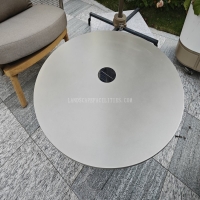Welcome to the website for landscape facilities products and knowledge.
How does teak handle sandstorms in a landscape tree box?
Teak trees (Tectona grandis) are renowned for their resilience, making them an excellent choice for landscape tree boxes in sandstorm-prone areas. Their natural adaptability allows them to endure harsh conditions while maintaining aesthetic appeal.
Sandstorm Resistance Mechanisms
Teak’s thick, waxy leaves minimize moisture loss and shield against abrasive sand particles. Its deep root system stabilizes the tree in shallow tree boxes, preventing uprooting during strong winds. Additionally, the hardwood’s dense structure resists physical damage from flying debris.
Optimal Tree Box Care
To enhance sandstorm survival:
1. Use well-draining soil mixed with organic matter to anchor roots.
2. Install windbreak mesh around young trees.
3. Water deeply but infrequently to encourage robust root growth.
4. Prune strategically to reduce wind resistance without compromising structure.
Urban planners favor teak for its dual role in erosion control and visual softening of hardscapes. Unlike more delicate species, established teak requires minimal intervention after sandstorm events, often shedding damaged leaves naturally and regenerating quickly.
For arid climates with frequent dust storms, teak outperforms many ornamental trees, proving that beauty and toughness can coexist in challenging urban environments.
Related search:

Recommendation
Outdoor stainless steel table with solar-powered ambient lighting feature - excellent design.